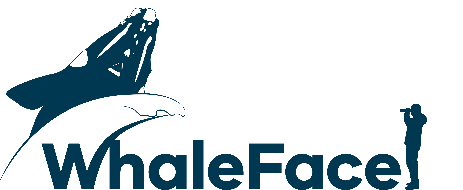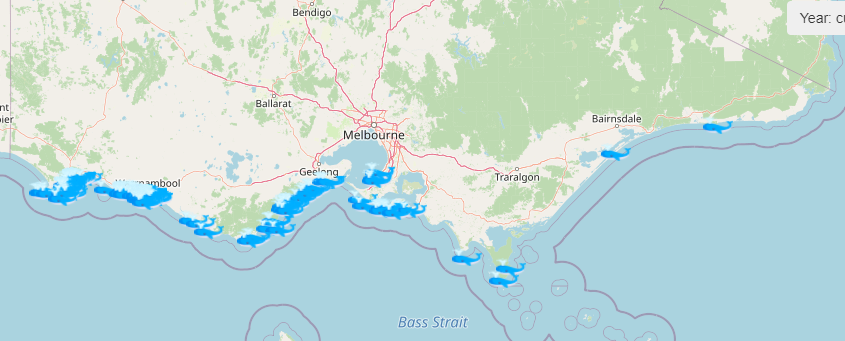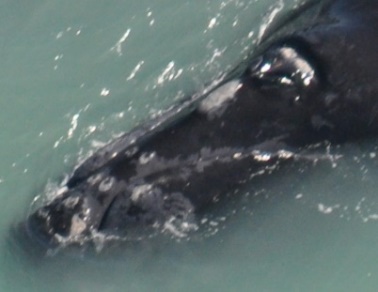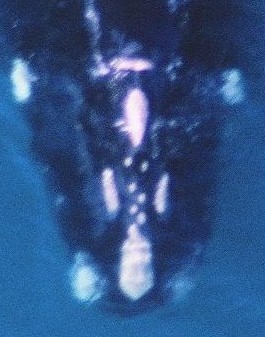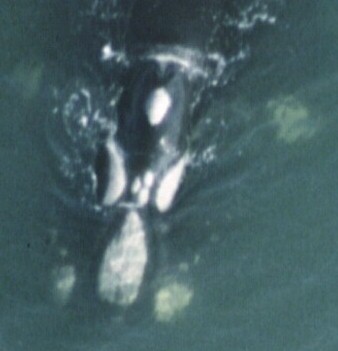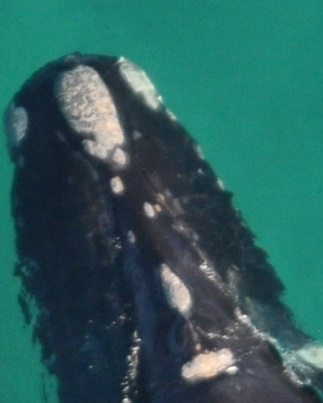Whale News - November 2021
|
In this month’s update, we’re pleased to share with you, summaries of the photo-ID matching results from the 2019 and 2020 seasons. Matching is carried out at the end of the whale season after all sightings have been submitted and compiled.
Due the fantastic response to the WhaleFace citizen science program, we have seen a significant increase in the volume of data to work through. We’re currently working through photos from the 2021 season and hope to share the results early in 2022, so stay tuned for next year’s Whale News editions.
Remember WhaleFace is the official repository for all Southern Right Whale sightings and images in Victoria. All validated data goes into DELWP’s databases and is shared and cross-matched with the national Southern Right Whale catalogue (ARWPIC). Your contributions help with management decisions for the protection of Southern Right Whale in Victorian waters and play a vital part in research into the recovery of the Southern Right Whale in eastern Australia.
What is Photo-ID?
Photo-ID is a powerful non-invasive tool for gaining information on migratory whale species, which are typically difficult to study. It allows us to follow individual life histories and better understand population dynamics such as the size of the population, its distribution and whether it is changing. This research is critical for conservation management of the Southern Right Whale in south-east Australia.
Photo-ID matching and cataloguing is a time-consuming process that requires specialist skills and lots of experience. Prior to matching, several curation steps must be undertaken, including image sorting, grading and labelling. Matching is then carried out by searching the catalogue for the same or similar whales. When searching, each whale’s callosity pattern is coded, and the catalogue searched for whales with similar codes. This system eliminates whales with features that are different to the one you are looking for. Our south-east Australian catalogue known as SEA SRW PIC, contains thousands of images of over 450 individual whales. It can take up to two hours to process each sighting.
The cataloguing process determines whether a whale is a re-sight of a whale already in the catalogue, or a new whale not previously catalogued. Once matching is complete, new whales are added and information on each sighting is included.
2019 and 2020 Photo-Id matching results
In 2019, we identified and catalogued a total of 37 whales:
|
|
||||
|
|
|
SE1410 - Black Bonnet |
SE0102 - Big Coaming |
SE0201 - Tripod |
|
|
|
First Sighted |
2014 |
2001 |
1995 |
|
|
|
Location first sighted |
Coorong, SA |
Logans Beach |
Logans Beach |
|
|
|
Number of Years Sighted |
2 |
6 |
7 |
|
|
|
Number of calves |
1 |
5 |
6 |
|
|
|
Location with calf |
Logans Beach |
Logans Beach |
Logans Beach |
|
|
|
Distinguishing features |
Bonnet callosity almost completely absent |
Large coaming callosity |
Three island callosities in tripod pattern |
|
|
|
|
|
|
||
In 2020, we identified and catalogued a total of 21 whales:
- 5 x cow:calf pairs, including 4 new females and 1 re-sight (SE1011). See table below for the resighting history of the known female
- 16 x unaccompanied adults, all new.
|
|
SE1011 |
|
First Sighted |
2010 |
|
Location first sighted |
southern NSW |
|
Number of Years Sighted |
3 |
|
Number of calves |
3 |
|
Location with calf |
Southern NSW |
|
Distinguishing features |
no lip callosities, indent on left side of bonnet |
|
|
Given the interruptions to the 2020 monitoring season due to COVID-19 lockdowns, this was a better-than-expected result. A particularly interesting finding in 2020 was the movement of a female (SE2002) and her calf from Victoria and into South Australia. Thanks to our citizen scientists and our photo-ID colleagues across the border, we were able to track this pair all the way from Cape Schanck to the Head of the Great Australian Bight between 28 June and 14 August - a journey lasting 47 days.
Sightings of all whales catalogued in 2019 and 2020 were contributed by citizen scientists from Victoria and New South Wales. We thank everyone who has shared sightings data and photographs to support our research program. Your contributions play an important role in our understanding of this threatened species.
For further information on the 2019 and 2020 season, or to find out more about whale IDs you contributed please email mandy.watson@delwp.vic.gov.au
Regards,
Mandy and Kasey
kasey.stamation@delwp.vic.gov.au
